7 Bamboo Species with the Best Profit Potential
Among the numerous varieties of bamboo, seven species in particular highlight the intersection of ecological sustainability and economic viability. In this article, we will delve into these bamboo types, shedding light on their unique characteristics and the potential they hold for transforming both local economies and global markets.
Bamboo species with high-profit potential include: Moso bamboo (Phyllostachys edulis), Guadua bamboo (Guadua angustifolia), Black bamboo (Phyllostachys nigra), Golden bamboo (Phyllostachys aurea), Bambusa oldhamii, Dendrocalamus asper, and Thamnocalamus tessellatus.
Moso bamboo can rake in over $30,000 per acre each year from mature plantations through its poles and shoots, and Guadua bamboo isn't far behind, with its earnings potentially surpassing Moso's depending on how it's used and processed. But there's more to the story—dive deeper with us into the profitable world of these bamboo giants.
Summary
- Moso and Asper bamboos stand out for their high profit potential, with estimated average profits per acre per year reaching up to $30,000.
- Species like Moso and Guadua bamboo, which are renowned for their strength and versatility, are particularly favored in construction and textile industries.
- While the initial setup and maintenance costs for bamboo cultivation can be substantial, the long-term profitability, especially over a 5-year cycle, indicates a strong return on investment.
- Black bamboo's aesthetic appeal for ornamental and landscaping purposes and Berg bamboo's versatility and ornamental value in high-end residential landscaping and boutique gardening projects show that targeted niche markets can lead to profitable outcomes.
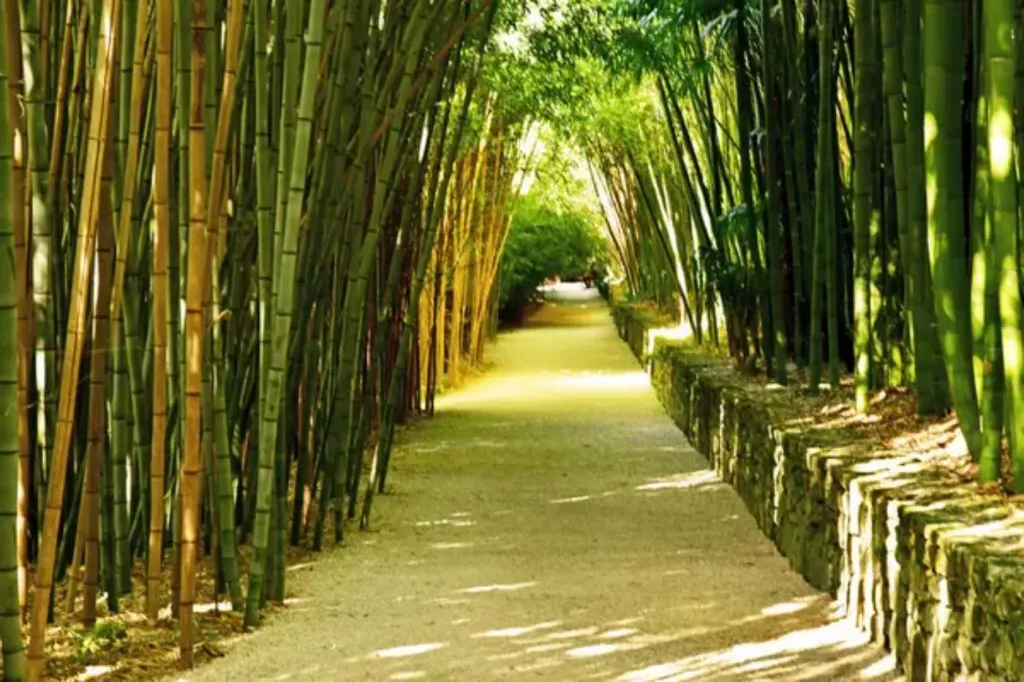
On this page:
- Bamboo Species With the Best Profit Potential
- Moso Bamboo's Multifaceted Applications
- Exploring Guadua Bamboo's Construction Potential
- The Unique Appeal of Black Bamboo
- The Ornamental Beauty of Golden Bamboo
- The Lush and Profitable Giant Timber Bamboo
- Asper Bamboo's Robust Uses
- Berg Bamboo's Versatile Charm
Bamboo Species With the Best Profit Potential
| Bamboo Species | Applications | Profit Marker | Estimated Profit Range per Acre |
|---|---|---|---|
| Moso bamboo | Flooring, textiles, edible shoots | High | $10,000 - $30,000 |
| Guadua bamboo | Building, construction | High | $8,000 - $25,000 |
| Black bamboo | Landscaping, decorative | Medium | $3,000 - $10,000 |
| Golden bamboo | Hedges, privacy screens | Medium | $2,500 - $7,500 |
| Giant timber bamboo | Landscaping, timber | Medium | $4,000 - $12,000 |
| Asper bamboo | Furniture, construction | High | $9,000 - $27,000 |
| Berg bamboo | Ornamental gardening | Low to Medium | $1,500 - $5,000 |
Analyzing the profit potential of bamboo species requires considering several factors such as growth rate, application versatility, market demand, and environmental adaptability.
Each of the species mentioned has unique characteristics that make them suitable for different markets and uses, impacting their profitability.
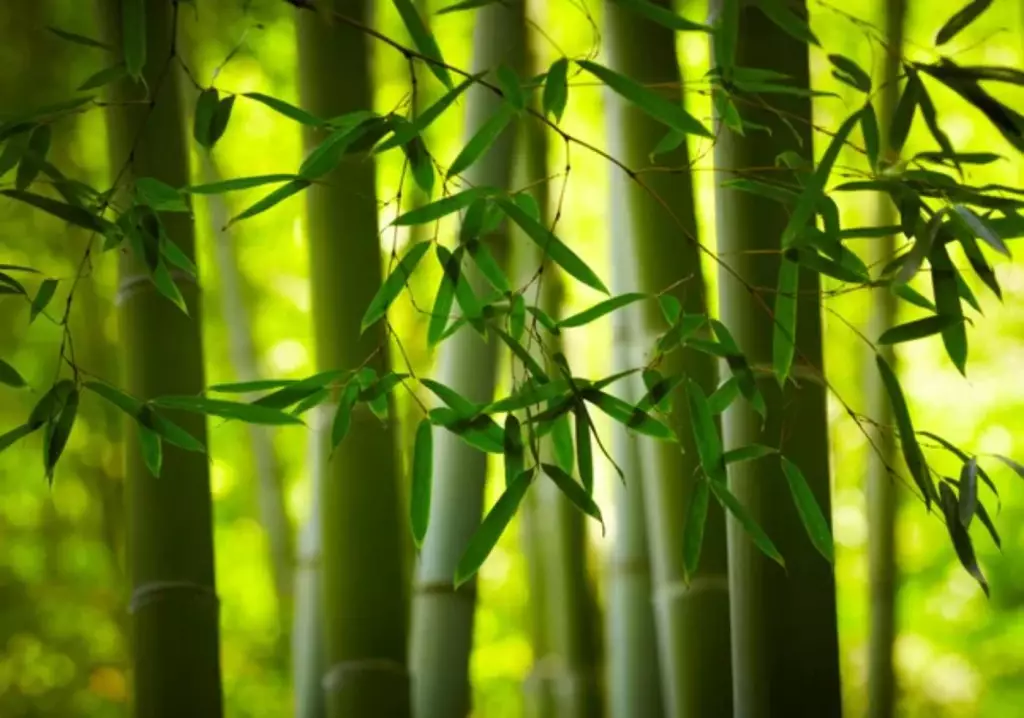
Moso Bamboo's Multifaceted Applications
Scientific name: Phyllostachys edulis
Average profit per acre: $10,000 - $30,000
Moso bamboo is one of the most economically significant bamboos due to its versatility. It has a rapid growth rate, reaching maturity in about 3 to 5 years, which is much faster than traditional timber.
Its applications range from construction materials, particularly flooring and paneling, to textiles (bamboo fiber) and even culinary uses (bamboo shoots), broadening its market.
The global demand for eco-friendly and sustainable products further enhances its profit potential. However, it requires a subtropical climate for optimal growth, limiting its cultivation to specific regions.
Profit calculation for Moso bamboo
-
Revenue: Assuming a diversified operation that taps into construction, textiles, and culinary markets, let's consider an average revenue of $40,000 per acre, accounting for a mix of high-margin products (like premium bamboo flooring) and lower-margin ones (like bamboo shoots).
-
Costs: Initial setup costs (land preparation, planting) plus ongoing maintenance, harvesting, and processing costs could be substantial, assuming it averages $10,000 per acre per year over the first 5 years, with significant capital expenses upfront.
For a single acre over the first 5-year cycle:
- Total revenue: Approx. $40,000 x 5 = $200,000 (assuming revenue starts to accrue from the third year but averages out over 5 years)
- Total costs: Approx. $10,000 x 5 = $50,000
- Estimated profit: $200,000 - $50,000 = $150,000 over 5 years, or an average of $30,000 per year after the initial setup period.
To calculate the profit per hectare for Moso bamboo, you can visit this artcile for more information.
Exploring Guadua Bamboo's Construction Potential
Scientific name: Guadua angustifolia
Average profit per acre: $8,000 - $25,000
Guadua bamboo is renowned for its strength, making it an excellent choice for construction, especially in earthquake-prone areas due to its flexibility and resilience.
It's also used for scaffolding, bridges, and water pipes. Its growth is concentrated in Latin America, and it plays a crucial role in local economies.
Guadua’s sustainability and renewability make it a valuable resource in efforts to combat climate change, which can drive market demand and profitability.
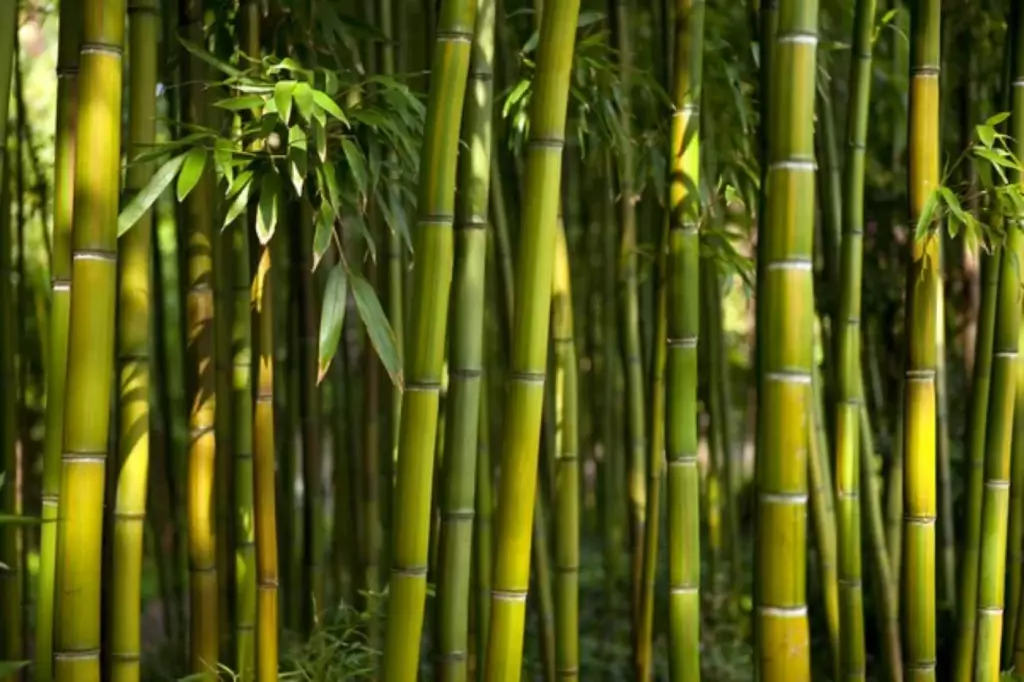
Profit calculation for Guadua bamboo
-
Revenue: Assuming a focused operation in the construction sector, leveraging its use in structural applications, scaffolding, and eco-friendly housing projects, we can estimate a conservative average revenue of $35,000 per acre. This accounts for both direct sales of bamboo poles and processed products like panels and flooring.
-
Costs: Given Guadua's growth cycle and the need for infrastructure to support construction-grade processing, let's estimate an average cost of $12,000 per acre over the first 5 years, with a substantial portion allocated to setup and processing equipment.
For a single acre over the first 5-year cycle:
-
Total revenue: Assuming that the market for bamboo-based construction materials expands and revenue begins to accrue significantly from the third year, we estimate a total revenue of approximately $35,000 x 5 = $175,000 over 5 years.
-
Total costs: With an average annual cost of $12,000, the total expenditure over the first 5 years would be about $12,000 x 5 = $60,000. This includes the high initial investment in cultivation and processing infrastructure.
-
Estimated profit: The net profit over the first 5 years would then be $175,000 - $60,000 = $115,000, or an average of $23,000 per year after the initial setup period.
The Unique Appeal of Black Bamboo
Scientific name: Phyllostachys nigra
Average profit per acre: $3,000 - $10,000
Black bamboo's unique aesthetic appeal due to its dark culms makes it highly sought after for ornamental and landscaping purposes. Its use in crafts and fencing can add a premium to its price.
While it has a niche market compared to Moso or Guadua, the demand for unique landscaping materials can make it quite profitable. It's suitable for smaller scale operations that focus on specialty markets.
Profit calculation for Black bamboo
-
Revenue: Given its ornamental value and the premium pricing it can attract in these niche markets, a conservative average revenue estimate could be $25,000 per acre. This takes into account both direct sales of bamboo poles and value-added products, such as crafted fencing panels and decorative items.
-
Costs: The costs associated with cultivating Black bamboo include land preparation, planting, and ongoing maintenance to ensure the health and aesthetic quality of the bamboo, so let's estimate about $8,000 per acre over the first 5 years, factoring in the need for targeted marketing and premium processing to maintain the unique quality of the product.
For a single acre over the first 5-year cycle:
-
Total revenue: With the targeted approach to premium markets and assuming steady demand, the total revenue over 5 years is estimated to be approximately $25,000 x 5 = $125,000.
-
Total costs: Considering the specialized care and marketing efforts, the total expenditure over 5 years is estimated at about $8,000 x 5 = $40,000.
-
Estimated profit: The net profit over the first 5 years would then be $125,000 - $40,000 = $85,000, or an average of $17,000 per year after the initial setup period.
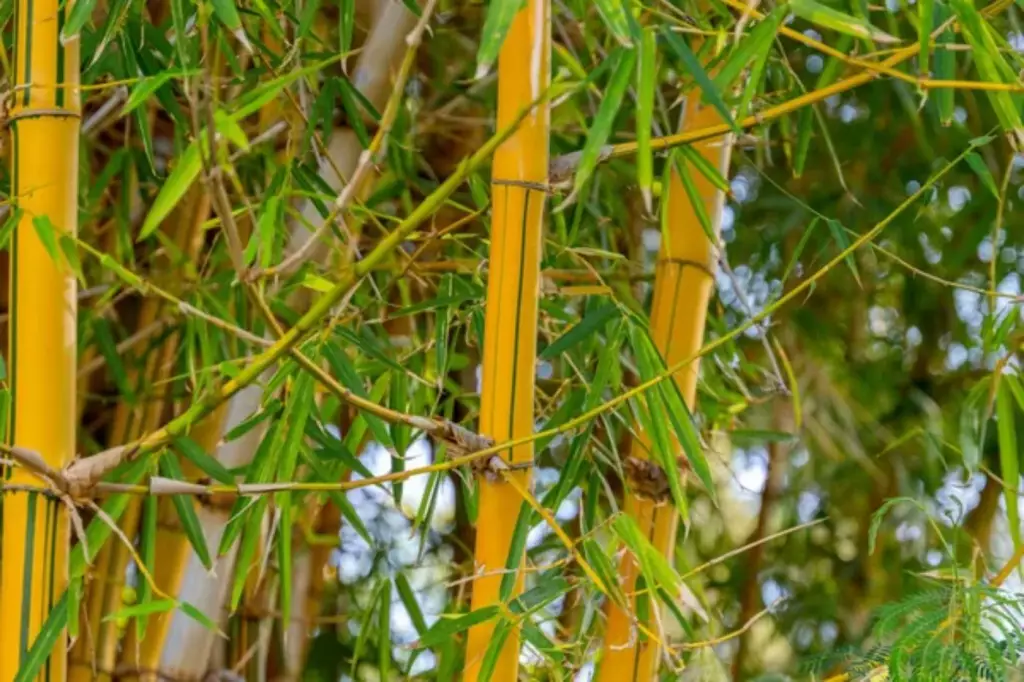
The Ornamental Beauty of Golden Bamboo
Scientific name: Phyllostachys aurea
Average profit per acre: $2,500 - $7,500
Golden Bamboo's ornamental appeal, particularly its bright yellow-green stems, makes it popular for hedges and privacy screens. Its adaptability to different climates and growth conditions enhances its marketability.
While primarily used in gardening and landscaping, its fast growth rate allows for quick turnovers in nursery and landscaping businesses, contributing to its profitability.
Profit calculation for Golden bamboo
-
Revenue: Considering its popularity and the premium it can fetch in the landscaping market, an average revenue of $20,000 per acre could be a conservative estimate for Godlen bamboo, reflecting both bulk sales to landscaping projects and retail sales through nurseries.
-
Costs: Cultivating Golden Bamboo involves initial costs related to land preparation, planting, and establishing a nursery setup for propagation. Estimating a comprehensive cost of $6,000 per acre over the first 5 years accounts for these factors while acknowledging the efficiency of managing and harvesting this fast-growing species.
For a single acre over the first 5-year cycle:
-
Total revenue: With steady demand in the ornamental and landscaping markets, the total revenue over 5 years is estimated at about $20,000 x 5 = $100,000.
-
Total costs: With an annual cost estimate of $6,000 factoring in maintenance and marketing, the total expenditure over 5 years would be approximately $6,000 x 5 = $30,000.
-
Estimated profit: The net profit over the first 5 years would then be $100,000 - $30,000 = $70,000, or an average of $14,000 per year after the initial setup period.
The Lush and Profitable Giant Timber Bamboo
Scientific name: Bambusa oldhamii
Average profit per acre: $4,000 - $12,000
Known for its large size and aesthetic appeal, Bambusa oldhamii is ideal for privacy screens and windbreaks, catering to both the landscaping and construction markets.
Its rapid growth, around 1-3 feet per year, and the high volume of biomass it produces can make it a profitable species for timber and pulp production, especially in regions where it can grow well.
Profit calculation for the Giant timber bamboo
-
Revenue: Capitalizing on its dual appeal for both ornamental and practical uses, Bambusa oldhamii can generate substantial revenue of around $30,000 per acre, reflecting the higher value attached to its timber and ornamental uses.
-
Costs: The cultivation of Giant Timber Bamboo involves initial investments in land preparation, planting, and infrastructure for propagation and maintenance. Considering these factors, an estimated cost of $9,000 per acre over the first 5 years can be projected, encompassing both the setup and operational expenses.
For a single acre over the first 5-year cycle:
-
Total revenue: With strong demand in both the ornamental landscaping and timber markets, the total revenue over 5 years could reasonably be estimated at about $30,000 x 5 = $150,000.
-
Total costs: Factoring in the comprehensive care, harvesting, and processing required, the total costs over 5 years are estimated to be around $9,000 x 5 = $45,000.
-
Estimated profit: This leads to a net profit over the first 5 years of $150,000 - $45,000 = $105,000, or an average of $21,000 per year after the initial setup period.
Asper Bamboo's Robust Uses
Scientific name: Dendrocalamus asper
Average profit per acre: $9,000 - $27,000
Dendrocalamus asper is highly valued in construction and furniture making due to its large size and strength. Its culms can be used in a variety of structural and non-structural applications, from building materials to decorative items.
The furniture market, in particular, offers high profit margins for quality bamboo products. Its cultivation is primarily in tropical regions, limiting its geographic range but not its profitability within those areas.
Profit calculation for Asper bamboo
-
Revenue: Given its application in both structural and decorative aspects of construction, as well as in the production of premium furniture, Asper Bamboo can command an average revenue of $45,000 per acre.
-
Costs: The cultivation of Asper Bamboo includes costs for land preparation, planting, and maintenance, with additional expenses for harvesting and processing to meet the quality standards required by construction and furniture markets. An estimated cost of $15,000 per acre over the first 5 years is projected, encompassing the full spectrum of production from planting to market-ready products.
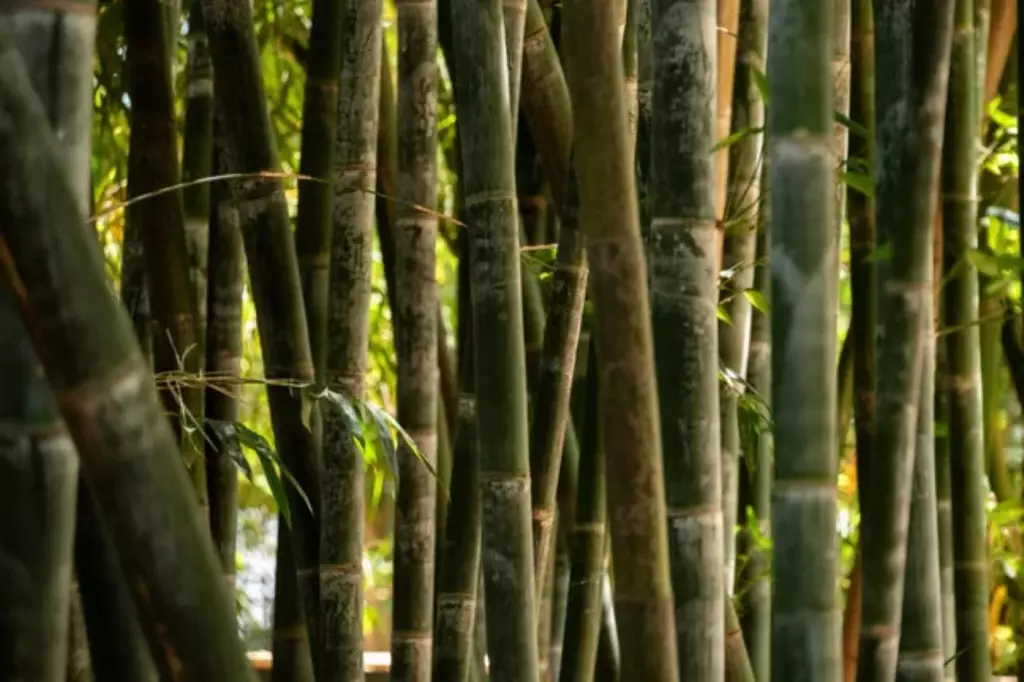
For a single acre over the first 5-year cycle:
- Total revenue: With a focused strategy on tapping into the premium sectors of construction and furniture, the total revenue over 5 years can be estimated at about $45,000 x 5 = $225,000.
- Total costs: Accounting for the comprehensive cultivation and processing expenses, the total costs over the same period are estimated to be around $15,000 x 5 = $75,000.
- Estimated profit: This results in a net profit over the first 5 years of $225,000 - $75,000 = $150,000, or an average of $30,000 per year after the initial setup period.
Berg Bamboo's Versatile Charm
Scientific name: Thamnocalamus tessellatus
Average profit per acre: $1,500 - $5,000
Though smaller than the giant timber bamboos, Berg bamboo's ornamental value makes it suitable for gardening and landscaping.
Its versatility and aesthetic appeal can cater to niche markets, potentially offering high profit margins on a smaller scale. It's particularly suited for temperate climates, allowing it to be grown in regions where larger bamboo species may not thrive.
Profit calculation for Berg bamboo
-
Revenue: Specializing in niche markets such as high-end residential landscaping, boutique gardening projects, and decorative uses, Thamnocalamus tessellatus can command an average revenue of $15,000 per acre.
-
Costs: The costs associated with cultivating Berg Bamboo include land preparation, planting, and ongoing maintenance to ensure its ornamental quality. An estimated cost of $5,000 per acre over the first 5 years is projected.
For a single acre over the first 5-year cycle:
-
Total revenue: With targeted efforts towards high-value, niche markets, the total revenue over 5 years can be estimated at approximately $15,000 x 5 = $75,000.
-
Total costs: Considering both the cultivation and marketing costs, the total expenditure over the same period would be about $5,000 x 5 = $25,000.
-
Estimated profit: This leads to a net profit over the first 5 years of $75,000 - $25,000 = $50,000, or an average of $10,000 per year after the initial setup period.



